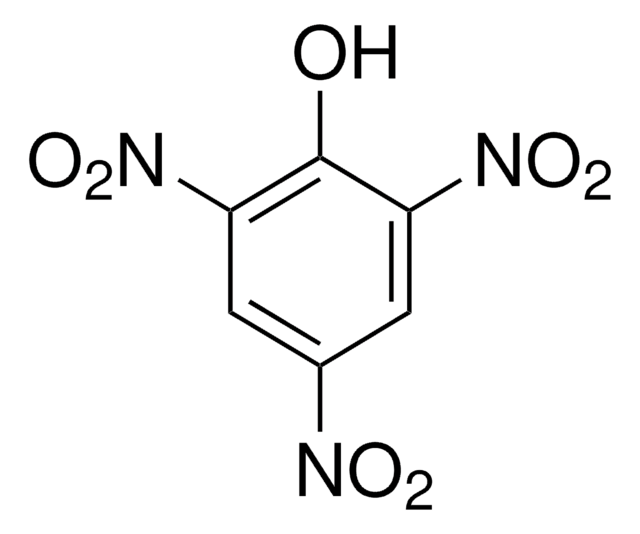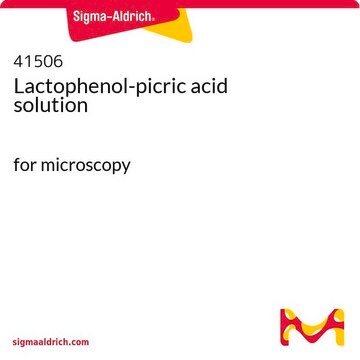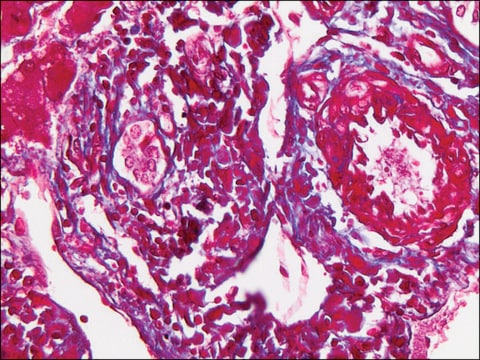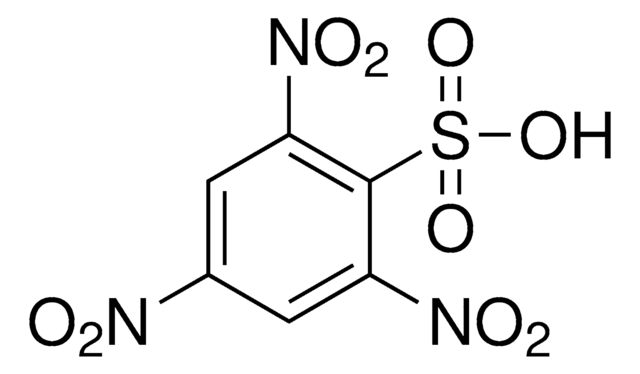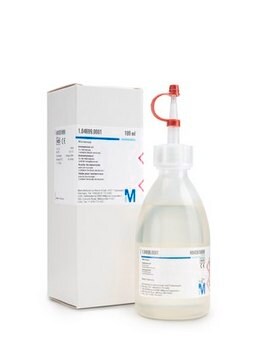197378
Picric acid
moistened with water, ≥98%
Synonyme(s) :
2,4,6-Trinitrophenol, PA
About This Item
Produits recommandés
Densité de vapeur
7.9 (vs air)
Niveau de qualité
Pression de vapeur
1 mmHg ( 195 °C)
Pureté
≥98%
Forme
powder or crystals (with a top layer of Liquid)
Contient
≥35% water
Limite d'explosivité
0.01 %
Pf
122-123 °C (dried material) (lit.)
Solubilité
alcohol: 1 (g/12 mL)(lit.)
benzene: 1 g/10 mL
chloroform: 1 (g/35 mL)
diethyl ether: 1 (g/65 mL)
Densité
1.763 g/cm3
Chaîne SMILES
Oc1c(cc(cc1[N+]([O-])=O)[N+]([O-])=O)[N+]([O-])=O
InChI
1S/C6H3N3O7/c10-6-4(8(13)14)1-3(7(11)12)2-5(6)9(15)16/h1-2,10H
Clé InChI
OXNIZHLAWKMVMX-UHFFFAOYSA-N
Vous recherchez des produits similaires ? Visite Guide de comparaison des produits
Description générale
Application
Mention d'avertissement
Danger
Mentions de danger
Conseils de prudence
Classification des risques
Acute Tox. 3 Dermal - Acute Tox. 3 Inhalation - Acute Tox. 4 Oral - Desen. Expl. 1
Code de la classe de stockage
4.1A - Other explosive hazardous materials
Classe de danger pour l'eau (WGK)
WGK 2
Point d'éclair (°F)
302.0 °F - closed cup
Point d'éclair (°C)
150 °C - closed cup
Équipement de protection individuelle
Eyeshields, Faceshields, Gloves, type P2 (EN 143) respirator cartridges
Faites votre choix parmi les versions les plus récentes :
Déjà en possession de ce produit ?
Retrouvez la documentation relative aux produits que vous avez récemment achetés dans la Bibliothèque de documents.
Notre équipe de scientifiques dispose d'une expérience dans tous les secteurs de la recherche, notamment en sciences de la vie, science des matériaux, synthèse chimique, chromatographie, analyse et dans de nombreux autres domaines..
Contacter notre Service technique